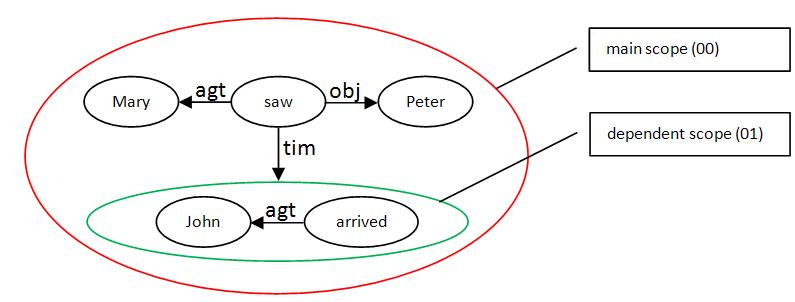Scope
(New page: The UNL representation is a '''hyper-graph''' and may consist of several interlinked or subordinate sub-graphs, which are used to define the boundaries and the scope of the semantic entiti...)
Newer edit →
Revision as of 21:52, 10 July 2010
The UNL representation is a hyper-graph and may consist of several interlinked or subordinate sub-graphs, which are used to define the boundaries and the scope of the semantic entities being represented. These sub-graphs correspond roughly to the concept of "clauses", i.e., groups of words that consist of a subject and a predicate. For instance, the sentence "Mary saw Peter when John arrived" is represented, in UNL, as follows:
They are said to be independent if they can stand alone as a sentence, or dependent (embedded, subordinate), otherwise. In the UNL framework, dependent clauses are represented as hyper-nodes (the so-called scopes) linked to the main clause, as indicated below:
- English: Mary saw Peter when John arrived.
- Mary saw Peter (independent clause)
- when John arrived (dependent clause)
- UNL:
- Mary saw Peter (independent clause) = agt(saw, Mary), obj(saw,Peter)
- John arrived (dependent clause) = agt:01(arrived, John)
- dependency relation = tim(saw, :01)
Where :01 (to be assigned to every relation inside the scope) is the scope index.
